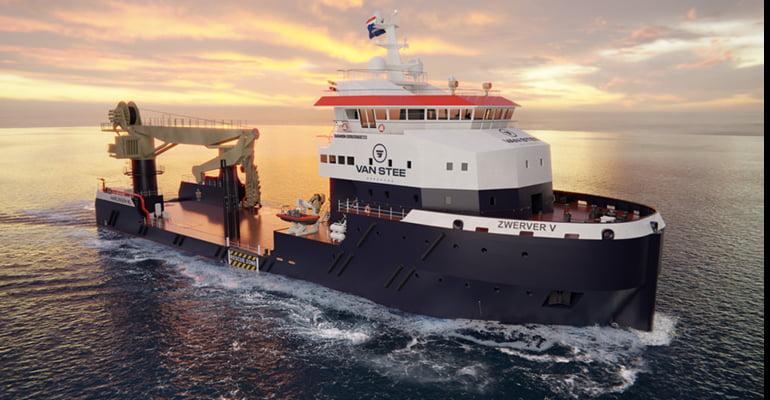The UAE shipyard, built from scratch in Sharjah’s Hamriyah Free Zone and opened in 2014, combines a busy new construction business with a thriving repair service. The strong local markets mean that the company’s repair teams have been working at full capacity for the whole year. And there is no sign of a letup any time soon, he adds.
The newbuilding team also has a range of projects on its books and has recently delivered an 80-metre Multibuster 8020 to Netherlands-based workboat operator, Van Stee. The ultra-shallow draft, multipurpose workboat offers significant operational flexibility by combining the strengths of the Multi Cat and Shoalbuster classes and can operate in waters just three metres deep.
The yard has also recently delivered the first of the company’s new Multi Cat 3313 SD workboats. With a draught of less than two metres, two deck cranes, an anchor winch, and towing pins, the vessel, named DMS Snipe, is suitable for a wide range of tasks. It has been built with an engine room ready to be upgraded to meet IMO Tier III emissions requirements when necessary.
The offshore support vessel (OSV) and anchor-handling tugs (AHTS) segments are front-runners this year, Seistrup says, although there are also plenty of opportunities in the civil, yacht, and security vessel sectors. The glut of offshore support vessels that were built from 2012-15 have mostly been absorbed now, Seistrup explains, and there are early discussions focusing on newbuilding projects as owners look to replace their ageing fleets.
Sustainability will be a focus in new vessel contracts, Seistrup believes. But he says there is relatively few options to increase the fuel efficiency of existing OSVs and AHTS since many were built some time ago. However, some owners have switched to biofuels, he says, which makes a lot of sense. But they are more expensive than normal fuel.
Copyright © 2024. All rights reserved. Seatrade, a trading name of Informa Markets (UK) Limited.
Add Seatrade Maritime News to your Google News feed.  |

